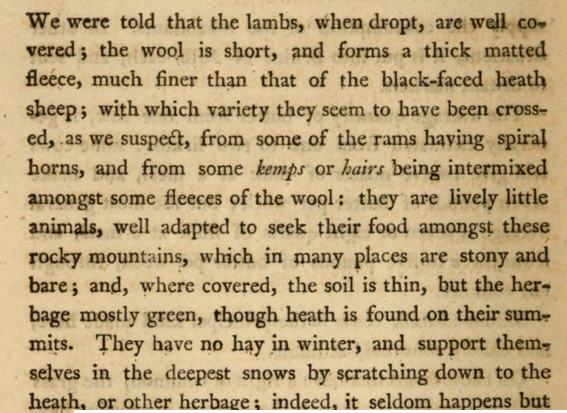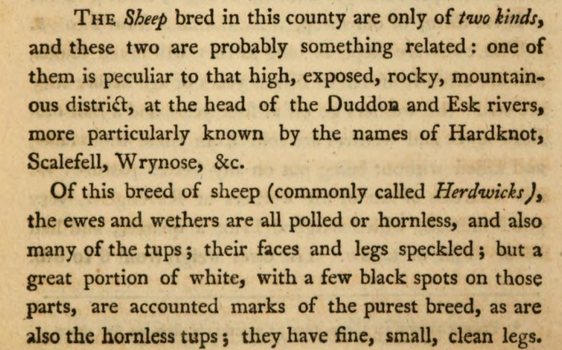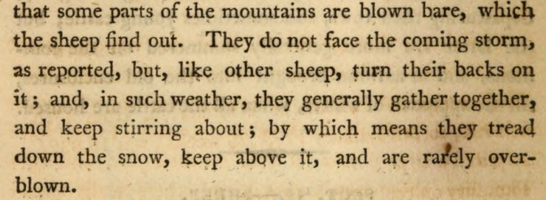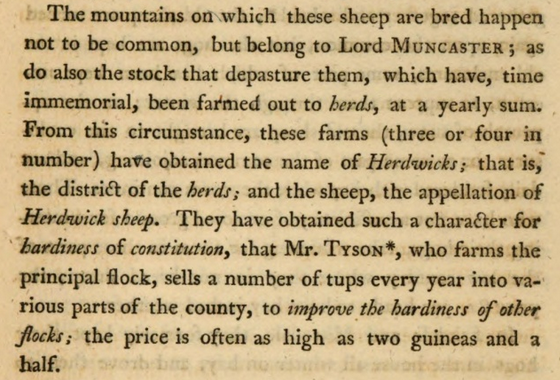The Sheep and their Wool
Cumbria without sheep would not be Cumbria. They have been the mainstay of the economy from time out of mind.
The main income from sheep today is the sale of their lambs, but in times past the wool was equally important. The Chancellor of the Exchequer in Parliament is still seated on "The Woolsack" in recognition of wool's historic value.
The Herdwick, the Rough Fell and their close neighbour the Swaledale have been bred and reared to withstand the climate. The Herdwick and Rough Fell in particular have been shepherded generation on generation, possibly back to early medieval times, to their own hill territory or "heaf", to which they will always return.
1315
In a list of the wool sold by religious houses in England, showing the quantities sold and the price paid for it in Flanders, we find, "The Monks of Shap sell their wool just as it comes from the fold, at 9 marks [£6] a sack, and they have usually ten sacks a year." (British History)
Commons vs Enclosed fields
Bailey & Culley in their 1794 survey for the Royal Agricultural Society comment that "the advantages that arise from enclosing, in respect to increase of produce or value, must entirely depend upon the modes of management" whether it was used as arable land or as pastureland. In particular, "while [the land is] in a state of common, everyone turns upon it what he pleases, and there is generally double the quantity of stock that there ought to be" so that the stock "barely existed", and did not improve. At this time clearly there was no law against keeping entire animals among the herds and flocks on the commons, so there was little control over what was bred there. One case near Penruddock was cited where the tups were never exchanged for fresh ones from elsewhere, so the sheep became extremely inbred. The flocks on commons elsewhere were described as being "ill-formed, poor, starved, meagre animals".
Cumberland: Chapter VI Enclosures
The Mountainous districts are all open, and most probably will long remain so; the cultivatable parts are a mixture of old enclosure and commons... the ancient fields are small and irregular... the fields of those commons that have been divided within the last thirty years [1790-1820 approx] are laid out in straight lines and mostly enclosed by quick fences [hawthorn]. Bailey & Culley
The Herdwick Sheep
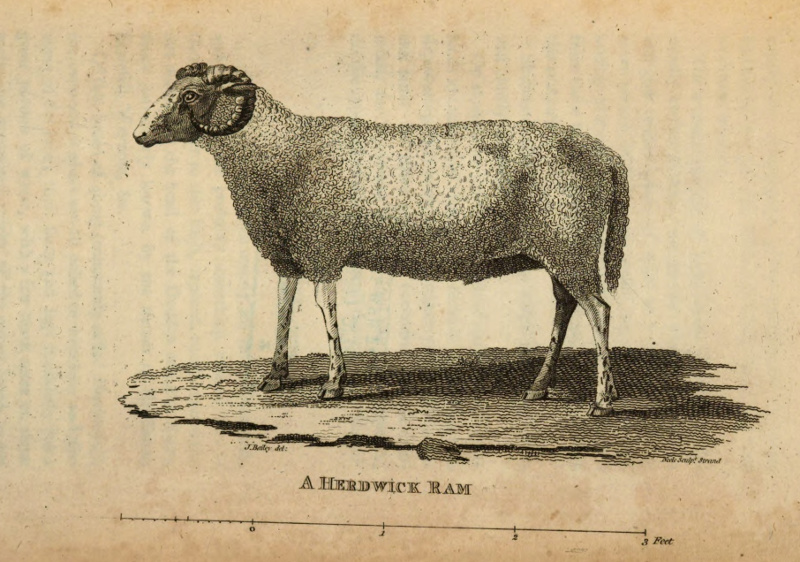
A Herdwick Ram, illustrated in Bailey & Culley's General View of the Agriculture of Cumberland, 1794.
